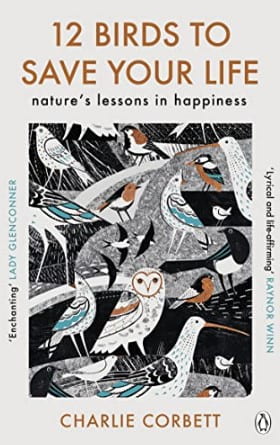Whilst his mother was dying, Corbett rediscovered the value of nature, in particular birds, and how it can offer us sanctuary and an escape from ourselves. Each of the 12 birds in the book offers a glimpse into our own lives and what we should be valuing. There are the wrens that huddle together through the winter to help keep each other alive, the robin, fierce and feisty around its territory but also capable of taking food out of our hands and the song thrush as it sings at night reminding us that life does go on after a death of a loved one. As an ode to how much I enjoyed the book, I thought I would write about a bird in my garden and grief.
14. Sparrowhawk
Slips from your eye-corner overtaking
Your first thought
Ted Hughes Sparrowhawk
Sometimes, mid to late summer, you will catch a streak swooping through the garden always on the right-hand side and then it’s gone. You are never quite sure whether you saw it or not and although you stare out of the window, nothing reveals itself.
Other times, there is a mass of feathers strewn around the garden at the top, in the relative shade and shelter of the back bank and hedge. They are everywhere, like the petals off the cherry tree, but when you get closer you see more. There is a rib cage and some feet and once a beak as well.
And then once, and only once, we saw it; hunched over a pigeon plucking and pecking over and over again with its craw spreading until we wondered if it would be able to take off. A car starts up next door disturbing it and it takes off, leaving the semi-eaten carcass on the floor, mangled and obscene.
Our garden has become the summer pantry for sparrowhawks, Accipiter nissus. They flash through every year for the last six or seven and are quite spectacular. If you are outside you can almost hear the swoosh of the wings and then they are away unlike the helicopters transporting the military or searching for someone lost at sea. Normally, the remnants we find are of pigeons but once we saw it lift the button-sweet chick of a wren off the top of the arm of the shade umbrella. The wren family had been chirping and fluttering in the hedge at the side of the house for over six weeks and we had seen the fledgling on its first flight. There was only one and it felt like it was a part of our daily life to notice it out and about. We were devastated, but it is true – when birds eat worms or slugs and snails we do not feel the same although the purpose is identical. Food and survival.
The latin name is descriptive – accipiter being a general word for bird of prey or hawk but with nisus being more specific meaning pressure or exertion. This is how a sparrowhawk kills – if it kills before eating – pressing its talons into the prey in a squeezing motion.
Three years after my mother died my grief is no longer a daily ritual but one that can shoot through me, swift and almost invisible, and I am left wondering what just happened. What was I thinking about? Was it important? And then I get on with the rest of my day. Othertimes, grief leaves its shadow. I’m not thinking of her but this activity is something we would do together or it reminds me of her with the thoughts going no further. I can leave a trail of these thoughts on some days following behind me, but with the wind in my sails I am moving forwards.
The times when I feel plucked and pecked are those times when the grief settles and
Lasers the lark-shaped hole
In the lark’s song
Ted Hughes, Sparrowhawk
Here, the thoughts surround me, guilt strewn over the ground with the end of Mum’s life no fun for anyone. And then I am disturbed by the ping of a text or the clock ticking and life carries on. Left is a sharp beak of regret or the spar of sadness to puncture another day. The nisus of grief.
Sparrowhawk
What it looks like: A largeish bird with the female larger than the male, broad winds and a long, slender tail. The males have a blue-ish grey back and the females are browner. Their eyes are bright yellow to orange and their long legs and talons are also yellow.
Where to find it: gardens, edges of woodlands, open countryside but also cities and towns. They are the seagulls of the birds of prey.
What does it sound like: It doesn’t sing. That would give the game away! Other birds around might set up a warning cry. They do have a plaintif cry that is shrill, sometimes described a mewling which it may sound like when the bird is further away and in flight. Listen to one here.
The book is wonderful. It reveals not only how Corbett coped with grief but also how birds illuminated aspects of his life and mine.
